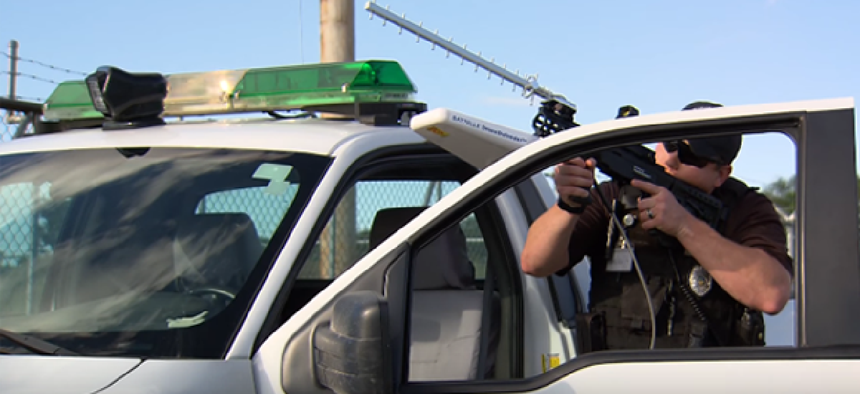Drone defense options grow from detection to disruption


Connecting state and local government leaders
While detecting drones can be a challenge, thwarting them once discovered can be even more difficult.
As unmanned aerial systems continue to proliferate, so does the threat they pose – especially from the smaller drones that are challenging to detect. Because they have a similar signature on radar to other objects such as birds, companies have been developing drone detection solutions, which generally include a pod with a complex array of sensors and jammers (and in rare cases, munitions) to thwart unwanted and potentially dangerous aircraft.
NEC’s surveillance system is capable of detecting drones up to a kilometer away to protect critical infrastructure such as sports stadiums, nuclear plants and airports, according to a PC World article. The system consists of an ultra-sensitive camera that can see the visible part of the spectrum, an infrared camera, an acoustic sensor to listen for sounds of incoming drones produced by propellers and a radio detection finder to triangulate the aircraft’s location.
Another precision drone defensive device is Batelle’s shoulder-fired gun that directs targeted pules of radio waves towards incoming aircraft to disrupt its communications. The electromagnetic cannon forces unmanned aircraft to enter into a manufacturer-set safety mode in which it can either land or return to its starting point, according to a report in The Register. The DroneDefender is being sold only to U.S. government customers.
Lockheed Martin has been developing its own counter-UAS solution for the past year as well. The ICARUS program, unveiled at the Association of the United States Army Annual Meeting, is a 6-inch by 10-inch by 8-inch system carrying passive detection sensors similar to those on the NEC surveillance system. But ICARUS can detect and counteract aircraft using non-kinetic countermeasures, Mike Panczenko director of cyber engineering and technology at Lockheed Martin told GCN.
Designed to thwart the immediate threat of drones weighing less than 10 to 12 pounds, ICARUS provides a variety of countermeasures that can meet the customers’ regulatory restrictions. For example, in the civilian context, it is illegal to attempt to jam a drone’s GPS because such methods are indiscriminate and can affect several surrounding systems.
For some customers, ICARUS provides surgical jamming capabilities that affect only the targeted drone. And in some combat situations, kinetic countermeasures are an option. Other countermeasures take advantage of Lockheed’s experience in cybersecurity, radio frequency and electromagnetic technologies.
The ICARUS system has performed well in multiple, simultaneous threat environments, Panczenko said, adding that he sees this program expanding given the estimates of growth in the drone industry.
NEXT STORY: Drone registry plan expected by Christmas




